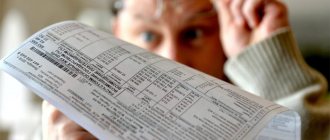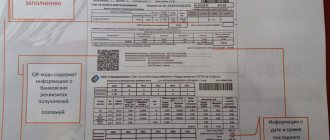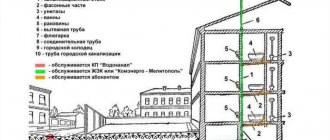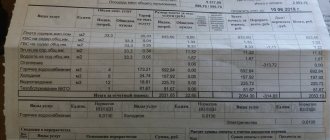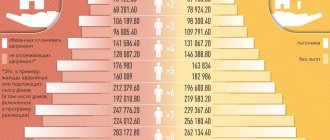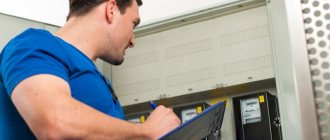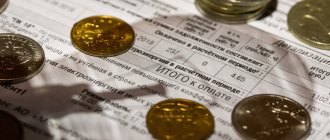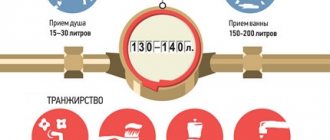Law
The main regulatory document regarding water supply and sanitation of houses is Federal Law dated December 7, 2011 N 416-FZ. It regulates the procedure for providing services to the population and organizations by relevant companies.
This law regulates the following principles and objectives within the framework of water supply and disposal:
- powers of government authorities at all levels in this matter;
- the procedure for supplying hot and cold water and its disposal;
- ensuring and monitoring the quality of supplied water;
- principles of environmental conservation in this field of activity;
- regulation of the application of tariffs.
The procedure that public utilities follow when providing services to the population is prescribed in the Rules approved by Decree of the Government of the Russian Federation No. 354 of 05/06/2011. It also defines services for the supply and disposal of water to apartment buildings and private buildings.
Responsibility for unpaid balance
Failure to pay the accumulated balance may result in the following warnings and penalties:
- Accrual of penalties - penalties depend on a certain percentage of the rate of the Central Bank of the Russian Federation, which can change and be accrued every day. The amount to be paid depends on the number of days after which payment was received. When paying a debt for a period of 31 to 90 days, the penalty will be 1/300 of the Central Bank key rate, after 91 days 1/130 of the Central Bank rate.
- After a certain excess of the balance and payment deadline, the consumer may have the service disconnected for non-payment. They will connect only after all debts and fines have been paid.
Drainage - what is it on the receipt?
Nowadays, many people monitor their utility bills and navigate calculations and concepts. Let us clarify what the lines in the receipts mean that are associated with such an important resource for us as water. Its consumption by each of us is divided into two concepts:
- Water supply . This is the water that is supplied by the utility supplier to the systems of an apartment building; it runs from our taps. According to the regulatory document, a round-the-clock uninterrupted supply of both cold and hot water of proper quality must be ensured. This means that purified water that meets the standards must flow from the taps in the living area. The temperature of the hot water supply is also established by the standards and must be supplied no lower than their values (water heating is highlighted on the receipt as a separate line).
- Water disposal . The received water is used and then transported through the sewerage system. The law gives the concept of this process, which includes the reception of wastewater, transmission through centralized sewerage systems to treatment facilities and their subsequent treatment (clause 2 of article 2 of Law No. 416-FZ).
Are drainage and sewerage the same thing?
Not everyone knows that drainage and sewerage are different concepts! Those homeowners who do not pay for sewerage are acting illegally, believing that it is the same thing. Let's find out if this is true.
What does drainage consist of?
Disposal of water used for the needs of apartment buildings and private buildings is an important event, consisting of:
- drainage of domestic wastewater from residential and non-residential premises through centralized sewer networks, which must be carried out around the clock;
- transportation of wastewater to treatment facilities;
- passing through a cleaning and disinfection system with subsequent use for technical purposes or discharge into natural bodies of water.
Conclusion: All sewage is removed from the house by drainage, then it is cleaned, and only then collected in the sewer and transported. In order for all systems to work efficiently and uninterruptedly, it is necessary to constantly maintain them in normal working condition. And this requires certain financial costs, which are covered by resource consumers.
Functions
The balance is extremely important for analyzing the activities of an enterprise. It is required to find out the current financial condition of the company. Based on the indicator, the following points can be determined:
- profitability of the enterprise;
- stable functioning of the company;
- analysis of the organization's profitability for different periods.
How to fill out line 4100 “Balance of cash flows from current operations” ?
For example, an enterprise recorded balance indicators throughout the entire period of its activity. The company has opened a new direction. Previously, the balance was closer to zero, but after the introduction of the new direction it began to grow sharply. This indicates that the innovation increased the profitability of the enterprise.
Example
On March 30, the organization received 500,000 rubles. On the same day, funds were spent on renting premises in the amount of 100,000 rubles. The opening balance on April 1 will be 400,000 rubles.
How is it paid?
Many apartment buildings are serviced by management companies that enter into agreements with water supply and sanitation service providers. Therefore, they calculate the fee for each specific apartment and display the amount on the receipt. Owners of private houses independently enter into contracts with the resource supply organization if the house is connected to centralized water supply and sewerage networks.
Service fees are charged by the management company on a monthly basis. It depends on the amount of water consumed according to the meter or, in the absence of a meter, according to the standard. For the calculation, the volume of cold and hot water is taken. The same number of cubic meters should go into the sewer.
Calculation examples
In many apartments and private houses, meters for metering consumed resources are already installed. Therefore, the starting point for calculating the consumed water that must be disposed of is the water meter readings.
WATER DISPOSAL = (DHW + cold water) × TARIFF
Since the payment for hot water supply consists of the consumed volume of cold water and its heating, in receipts you can see lines such as:
- cold water supply - the number of cubic meters of cold water according to the meter;
- water heating - only that volume of hot water supply (m3) that is taken from the meter reading (IPU).
You should pay attention to the coincidence of the consumed and allocated volume. If a difference is noticed, you need to contact the management company for clarification as to why this happened.
Possible nuances
When determining the amount of utility bills, a number of nuances are taken into account. The management company is obliged to pay attention to them. For example, some categories of people are entitled to a reduction in the amount of payments. However, to do this, it is worth submitting the relevant documents confirming the possibility of receiving benefits.
The total amount of compensation, subsidy, reduction depends on which category of beneficiaries the payer belongs to. It is also influenced by the number of people living in the apartment, as well as the total amount of family income.
At the regional level, various benefits are established. A complete list can be found in the territorial division of social protection of the population.
Who pays for housing and communal services - the person registered in the apartment or the owner?
However, all people belonging to a specific category have the right to use federal benefits.
| Category of beneficiaries | Scope of benefits provided |
| Veterans of the Great Patriotic War, home front workers | Reduction by half for all utilities |
| Disabled people of the first and second groups, as well as parents of a disabled child | 50% of utility costs |
| Participants in the liquidation of the Chernobyl disaster, as well as persons taking part in the liquidation of other atomic consequences | Half the cost of all utilities |
| Large families (three or more children) | At the federal level 30% of the cost of utilities + regional benefits |
| Veterans of Labor | 50% of the cost of utilities |
| Employees of budgetary institutions in villages, villages | Previously, a 100% discount was established at the federal level, but now this benefit is provided by regional authorities |
| Low-income families | At the federal level 15% + regional surcharges (provided as subsidies) |
However, only those who do not have utility debts can apply for the benefit. If there are any, you should pay the entire amount and then proceed with registration.
Attention! The management company is not obliged to provide the benefit on its own. Subsidies and cost reductions can be obtained only after submitting a package of documents to the territorial department of social protection of the population.
All owners whose utility bills amount to more than twenty percent of the total family income will receive the benefit. As a rule, the poor belong to this category, since their income level is always below the subsistence level.
claims to the Criminal Code for recalculation free of charge in word format
In some cases, management companies make mistakes when determining the cost of utility services. If they are detected, you should contact an authorized employee of the Criminal Code with a statement. It is compiled in free form.
However, it should reflect:
- the essence of the complaint,
- exact surname, first name, patronymic,
- name of the management company,
- the address where the apartment is located, where the receipt with incorrectly accrued utility bills was received,
- contact phone number.
Please note that the management company employee must register the appeal. On the second copy of the application, you should ask for a date, signature and its transcript. This line will signal that the application has been accepted for consideration.
ATTENTION! Look at the completed sample claim to the Criminal Code for recalculation:
What to do if you bought an apartment with debts for housing and communal services?
Please note that quality service and accurate calculation of the amount depend only on timely payment of utilities. When determining payment, the human factor cannot be excluded. So, for example, if the owner has not paid for several months, it becomes more difficult for the utility service employee to recalculate.
Water disposal at ODN in 2021
Residents of apartment buildings are also required to pay for such expenses as general house needs. If a collective metering device for water disposal is installed in the house, then it is easy to measure the difference by its readings and the drainage of water from apartments supplied by individual metering devices.
If such a deviation is present, then this will be one. Needs are distributed to each apartment in proportion to its area in the total volume of premises of the house.
If a device that specifically takes into account water drainage is not installed in an apartment building, then residents are not required to pay for the ODN for this item. This is due to the fact that standards are not established here, and therefore there is no calculation procedure.
Metering devices
In addition to a regular water meter, you can also install a wastewater flow meter - in this case, the payment for sewerage will be calculated based on its readings. This device is installed directly on the sewer pipeline and measures how much water flows into it. There are both apartment metering devices (KPU) and common house metering devices (DPU).
First of all, installing such a device will be beneficial if you live in a private sector, where a significant portion of the water is not sent to drains, but is used, for example, for irrigation or other similar activities.
With active water consumption without draining it into the sewer system, payments for hundreds of liters can be saved per week due to the flow meter, which makes its installation absolutely mandatory - the device pays for itself in a matter of months. In an apartment, the savings will be much less noticeable, and therefore the installation of a flow meter can no longer be called so necessary.
There are two types of flow meters based on their operating principle:
- measuring the water level in the pipeline;
- measuring the level and flow rate.
A device of the first type can be used for a non-pressure collector, that is, if the drains move without pressure, solely due to the inclination of the pipe and gravity. The second type of device is used in pumping systems.
What to do if there is no meter?
The simplest and most economical way to account for water consumption is to use individual meters. But not all residential premises or private households have them installed yet. For such residents, approved consumption standards are applied, according to which calculations and wastewater disposal are carried out. They are enshrined in regulations of local authorities. These standards far exceed the figures that reflect the actual volumes of resource used.
To know how much to put in a receipt for a given resource, the following criteria are taken:
- the number of persons living in this living space;
- average standard water consumption in cubic meters per person;
- tariff established by local authorities for 1 cubic meter of wastewater disposal.
By multiplying all three indicators, you get the amount that will be reflected in the receipt for utilities for this item.
Standards are constantly being revised upward, which encourages the population to install individual meters.
Rates
It is legally determined that tariffs for sewerage and water supply are set by local governments for the calendar year.
Their value depends on a number of criteria:
- how worn out the sewer system is, with plans for its partial modernization or ongoing repairs;
- condition of wastewater treatment facilities;
- other factors related to the availability of maintenance personnel and emergency crews.
Standard tariff values are freely available, and you can check them with the local administration or management company. Approved for residents of apartments where there are no meters.
For example, tariffs in 2021 excluding VAT were:
| City | Tariff, rub. |
| Moscow | 30,90 |
| Saint Petersburg | 32,53 |
| Sevastopol | 29,27 |
| Novosibirsk | Gorvodokanal - 15.08, Lozhok - 61.81 |
| Omsk | 20,93 |
| Samara | 19,30 |
Wastewater concept
Wastewater is fresh water that has changed its properties due to industrial or domestic (in this case, this is the option) human activity. Accordingly, industrial, domestic and rainwater wastewater is separated.
Domestic wastewater is generated in residential buildings. They contain both mineral and organic pollutants, and are found in dissolved, undissolved, and colloidal states. This diversity determines the specificity of their purification, which is often more complex than for industrial waste.
Due to the heterogeneous composition, complete wastewater treatment cannot be carried out, and a sufficient degree of purification is regulated by Sanitary norms and rules, as well as standards of maximum permissible concentrations (MPC).
